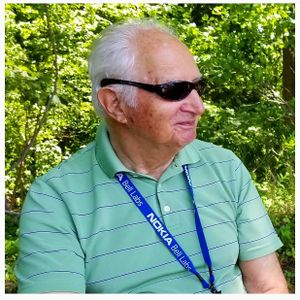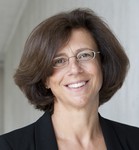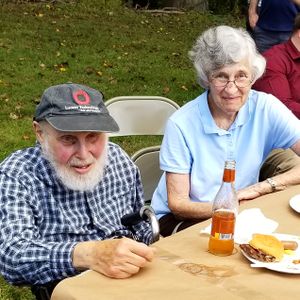IEEE New Jersey Coast Section History
| IEEE New Jersey Coast Section History | |
|---|---|
| Established date | 1965/03/20 |
| IEEE Region | 1 |
| IEEE Council | Metro Sec. Act. |
| Geographic region | New Jersey Coast |
| Region area | |
| Principal cities | |
| Home page | |
| List of Subsections in this Section
| |
Brief History
The New Jersey Coast Section of IEEE was established on 20 March 1965. On this date the Executive Committee of IEEE officially approved the transfer of the Monmouth Sub-section of IEEE to full Section status. Dr. David C. Hogg, a member of the National Academy of Engineering, was the chair of the Monmouth Sub-Section of the New York Section at the time of the approval to form the New Jersey Coast Section.
On 28 December 1978, the expansion of the ED/MTT Chapter of the New Jersey Coast Section to include QEA Chapter to form ED/MTT/QEA Joint Chapter was improved. Howard Wichansky was recorded as the chair of the Chapter.
The Region 1 Board of Governors held a meeting at at South Seaside Park, New Jersey on 26 September 1981.
On 19 May 1983, the Joint Chapter of the Circuits and Systems and Control Systems Societies in the New Jersey Coast Section was approved .
On 26 November 1984, the existing New Jersey Coast Joint Vehicular Technology and Electromagnetic Compatibility Chapter expanded to include Antennas and Propagation.
On 20 May 1985, all approvals were received for the expansion of the existing New Jersey Coast Aerospace and Electronic Systems Chapter to include Engineering Management. Edmund Karaukas was recorded as the Interim Chair.
On 28 October 1988, the change in status of the Circuits & Systems and Control Systems Joint Chapter to a single Circuits & Systems Chapter in the New Jersey Coast Chapter.
On 9 April 1990, the IEEE Executive Committee approved the expansion of the Circuits & Systems Chapter to include the Signal Processing Society in the New Jersey Coast Section.
On 20 July 1990, the Computer Chapter expanded to become joint with the Instrument & Measurement Society in the New Jersey Coast Section with Richard A. Kuntz as the Joint Chapter Chair.
On 21 February 1995, the Computer/Communications Society Joint Chapter of the New Jersey Coast Section was formed.
On 20 July 2003, the New Jersey Coast Section's Consultants Network Affinity Group was formed.
Section Milestones
- Detection of Radar Signals Reflected from the Moon, 1946
- American Standard Code for Information Interchange ASCII, 1963
- Trans-Atlantic Telephone Fiber-Optic Submarine Cable (TAT-8), 1988
New Jersey Coast Section IEEE Award Recipients
IEEE Medal of Honor: Harald T. Friis, 1955; George C. Southworth, 1963; Rudolf Kompfner, 1973;C. Kumar Patel (C. K. N. Patel), 1989; Alfred Y. Cho, 1994; Herwig Kogelnik, 2001; Gerard J. Foschini (Jerry), 2008
IEEE Alexander Graham Bell Medal: Amos E. Joel, Jr.; William Keister; Raymond W. Ketchledge, 1976; Gerard J. Foschini (Jerry), 2008
IEEE Edison Medal: John R. Pierce, 1963; C. Chapin Cutler, 1981; Ursula Keller, 2019
IEEE Simon Ramo Medal: Victor B. Lawrence, 2007
IEEE Award in International Communication: Eugene O'Neill (E. F. O'Neill), 1971; Victor B. Lawrence, 2004
Harry Diamond Memorial Award: Marcel J. E. Golay, 1951; Harold A. Zahl, 1954; Georg Goubau, 1957; Helmut L. Brueckmann, 1961; John J. Egli, 1966; Harold Jacobs, 1973
IEEE Mervin J. Kelly Award: Harald T. Friis (H. T. Friis), 1964
IEEE Morris N. Liebmann Memorial Award: Harald T. Friis (H. T. Friis), 1939; J. A. Pierce, 1953; Stewart E. Miller, 1972; Willard S. Boyle, 1974; Alfred Y. Cho
IEEE David Sarnoff Award: Rudolf Kompfner (Rudi), 1960; B. C. DeLoach Jr., 1975; H. E. Rowe, 1977; J. M. Manley, 1977; A. G. Fox, 1979; Tingye Li, 1979
Browder J. Thompson Memorial Prize Award: A. W. Randals, 1950; Arthur Karp, 1958
IEEE Eric E. Sumner Award: Debasis Mitra, 1998; Gerard J. Foschini (Jerry), 2004; Krishnan Sabnani, 2005; Reinaldo A. Valenzuela, 2010; Jack H. Winters, 2012
IEEE Lamme Medal: C. Kumar Patel (C. K. N. Patel), 1976
IEEE Richard M. Emberson Award: Don Heirman, 2018
Centennial Awards: John G. Nordahl, Martin V. Schneider, Robert C. Eckenfelder, A. Gardner Fox, Bruce C. Miller, Vasant K. Prabhu, Luke G. Schimpf, Robert W. Wilson, Mary N. Youssef.
New Jersey Coast Section Nobel Laureates
Nobel Prize - Arthur Ashkin, 2018; Robert Wilson, 1978; Arno A. Penzias, 1978
Prominent Members
- Howard E. Michel, IEEE President and CEO, Since joining IEEE more than four decades ago, Howard has held a variety of leadership positions, including Vice President of Member and Geographic Activities (MGA), where he led efforts to enhance IEEE’s member and volunteer communities.
- Karl Guthe Jansky - Father of Radio Astronomy, "Making Waves: Genius At the Jersey Shore", presentation by Herwig Kogelnik
Section Officers
Current section officers:
Chair: Filomena Citarella
Vice Chair: Ali Daneshmand
Treasurer: Michael Sosa
Secretary: Fatimah Shehadeh Grant
Past NJ Coast Section Officers
| Chair | Vice chair | Secretary | Treasurer | "Scanner" Editors | Year |
|---|---|---|---|---|---|
| Irfan Lateef | John J Deltuvia | Filomena Citarella | 2021 | ||
| Irfan Lateef | Ajit Reddy | Claude Martell | Filomena Citarella | 2020 | |
| Irfan Lateef | Ajit Reddy | Claude Martell | Filomena Citarella | 2019 | |
| Irfan Lateef | Ajit Reddy | Claude Martell | Filomena Citarella | 2018 | |
| Adriaan Van Wijngaarden | Margaret Lyons | Thomas Perkins | Santo Mazzola | 2017 | |
| Newman Wilson | Margaret Lyons | Eamon Wall | Rulei Ting | 2016 | |
| Ralph Wyndrum | Newman Wilson | Howard Kradjel | Rulei Ting | 2015 | |
| Ralph Wyndrum | Newman Wilson | Frank Laslo | Rulei Ting | 2014 | |
| K Raghunandan | Ralph Wyndrum | Frank Laslo | Rulei Ting | 2013 | |
| K Raghunandan | Ralph Wyndrum | Frank Laslo | Rulei Ting | 2012 | |
| T K Srinivas | K Raghunandan | Frank Laslo | Rulei Ting | 2011 | |
| T K Srinivas | Wei Su / John Palfranan | K Raghunandan | Rulei Ting | 2010 | |
| T K Srinivas | Wei Su | K Raghunandan | Rulei Ting | 2009 | |
| T K Srinivas | Wei Su | K Raghunandan | Rulei Ting | 2008 | |
| Bala Prasanna | Amruthur Narasimhan | Dru Reynolds | Rulei Ting | 2007 | |
| Bala Prasanna | Ming Yu | Robin Ying | Rulei Ting | 2006 | |
| Bala Prasanna | Ming Yu | Robin Ying | Rulei Ting | 2005 | |
| Bala Prasanna | Ming Yu | Bin Xie | Rulei Ting | 2004 | |
| Bala Prasanna | Ming Yu | Bin Xie | Rulei Ting | 2003 | |
| Amruthur Narasimhan | Irfan Lateef | Ming Yu | Rulei Ting | 2002 | |
| Amruthur Narasimhan | Irfan Lateef | Ming Yu | Rulei Ting | 2001 | |
| Amruthur Narasimhan | Bala S. Prasanna | Ming Yu | Rulei Ting | Jose R. Bonilha | 1999-2000 |
| Amruthur Narasimhan | Bala S. Prasanna | Ming Yu | Rulei Ting | George G. McBride | 1998-99 |
| Amruthur Narasimhan | Kazem Sohraby | Ajay K. Jain | Alexander D. Walter | George G. McBride | 1997-98 |
| Krishnamurthy Raghunandan | Kazem Sohraby | Mojtaba Shariat | Alexander D. Walter | vacant | 1996-97 |
| William D. Wilber | Kazem Sohraby | Jagadeesh Pamulapati | Alexander D. Walter | George G. McBride | 1995-96 |
| George G. McBride | Alireza Mahmoodshahi | Kazem Sohraby | William D. Wilber | Jaime R. Tormos | 1994-95 |
| Umesh J. Amin | George G. McBride | Sub Krishnamurthy | William D. Wilber | Jaime R. Tormos | 1993-94 |
| Timothy J. Rooney | Umesh J. Amin | Richard Seyfert, Jr. | William D. Wilber | Jaime R. Tormos | 1992-93 |
| Erwin E. Muller | Timothy J. Rooney | Richard Seyfert, Jr. | William D. Wilber | Jaime R. Tormos | 1991-92 |
| Gary L. McElvany | Erwin E. Muller | Richard Seyfert, Jr. | Alireza Afrashteh | Jaime R. Tormos | 1990-91 |
| Meredith Gee | Gary L. McElvany | Richard Seyfert, Jr. | Timothy J. Rooney | Umesh J. Amin | 1989-90 |
| R.L. Ross | Meredith Gee | Gary L. McElvany | Timothy J. Roony | Umesh J. Amin | 1988-89 |
| Karen A. Perry | R.L. Ross | Meredith Gee | Christine A. Heaney | Timothy J. Rooney | 1987-88 |
| Debora A. Berberian | Karen N. Archer | Meredith Gee | David G. Shaw | Gary C. Smith | 1986-87 |
| David R. Gunderson | Debora A. Berberian | Larry Bulanda | Karen N. Archer | David G. Shaw | 1985-86 |
| Mari Campanella | John R. Baechle | Debora A. Berberian | You-Hsin E. Yen | Kwang S. Park | 1984-85 |
| David B. Usechak | Michael J. McMahon | David R. Gunderson | Derek S. Morris | Debora A. Berberian | 1983-84 |
| Don N. Heirman | David B. Usechak | Joseph G. Kneuer | Michael J. McMahon | Pat Trischitta | 1982-83 |
| Joseph A. Keilin | Don N. Heirman | Mary Ellen McNamara | David B. Usechak | Mike McMahon | 1981-82 |
| Miguel A. Carrio | Joseph Keilin | Don N. Heirman | Mary Ellen McNamara | Joseph G. Kneuer | 1980-81 |
| Joseph Chislow | Miguel A. Carrio | Joseph Keilin | Howard Wichansky | Don Heirman | 1979-80 |
| Sidney Marshall | Joseph Chislow | Miguel A. Carrio | Joseph Keilin | Nicholas LaRocca | 1978-79 |
| V. Ramu Ramaswamy | Sidney Marshall | Joseph Chislow | Miguel A. Carrio | Seungtaik | 1977-78 |
| David Haratz | V. Ramaswamy | Sidney Marshall | R.L. Maybach | William Montgomery | 1976-77 |
| Victor Ransom | David Haratz | V. Ramaswamy | W. B. Glendinning | Joseph Keilin | 1975-76 |
| Bruce C. Miller | Victor Ransom | David Haratz | V. Ramaswamy | William Stirrat | 1974-75 |
| Vasant K. Prabhu | Bruce C. Miller | Victor Ransom | David Haratz | J. Gielchinsky | 1973-74 |
| Seymour Krevsky | Vasant K. Prabhu | Bruce C. Miller | Victor Ransom | Ramu Ramaswamy | 1972-73 |
| Detlef C. Gloge | Seymour Krevsky | Vasant K. Prabhu | Bruce C. Miller | Salomon Lederman | 1971-72 |
| Anthony J. Kazules | Detlef C. Gloge | Seymour Krevsky | Vasant K. Prabhu | John A. Soboleski | 1970-71 |
| Martin V. Schneider | Anthony J. Kazules | Detlef C. Gloge | Seymour Krevsky | John F. Prorok | 1969-70 |
| John J. O'Neil | Martin V. Schneider | Anthony J. Kazules | D. Gloge | Bruce C. Miller | 1968-69 |
| Louis H. Enloe | John J. O'Neil | Martin V. Schneider | Anthony J. Kazules | Warren Kesselman | 1967-68 |
| Robert Roullette | Louis H. Enloe | John J. O'Neil | Martin V. Schneider | Martin V. Schneider | 1966-67 |
| Herbert S. Bennett | Robert Roullette | L. H. Enloe | John J. O'Neil | John J. O'Neil | 1965-66 |
| Past Chairmen | Past "Scanner" Editors | Dates |
| David C. Hogg | 1964-65 | |
| Irving Reingold/ Nathan Lipetz | 1960-61 | |
| Arthur H. Ross | 1956-57 | |
| George F. Senn | 1955-56 | |
| William M. Goodall | Carl A. Borgeson | 1954-55 |
| O. D. Perkins | 1953-54 | |
| Sloan D. Robertson | Archie P. King | 1952-53 |
The first issue of the New Jersey Coast Section newsletter "Scanner" was printed on September 1950.
Section events and photo galleries
- "Section History Initiative Emerging from the Pandemic", by Kit August
- The Third Last Crawford Hill Picnic, October 9, 2018
- Awards Banquet 7 June 2018
- 50th Anniversary of the New Jersey Coast Section, May, 2015
- A Day at the Museum with Dr Robert Wilson
Archival documents
- Section petition documents
- IEEE New Jersey Coast Section Newsletter Jan/Feb 2010
- IEEE New Jersey Coast Section Centennial Journal Part 1
- IEEE New Jersey Coast Section Centennial Journal Part 2
- IEEE NJ Coast Section Talk Description Oct. 2006
- IEEE Geographic Organizing Document - New Jersey Coast Section
- IEEE New Jersey Coast Section Awards Banquet 7 June 2018 Program


